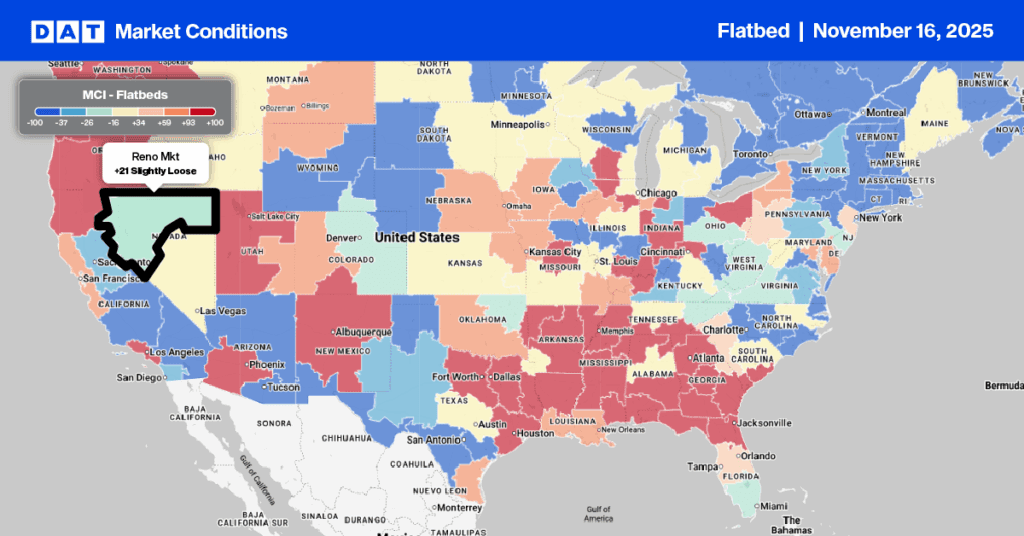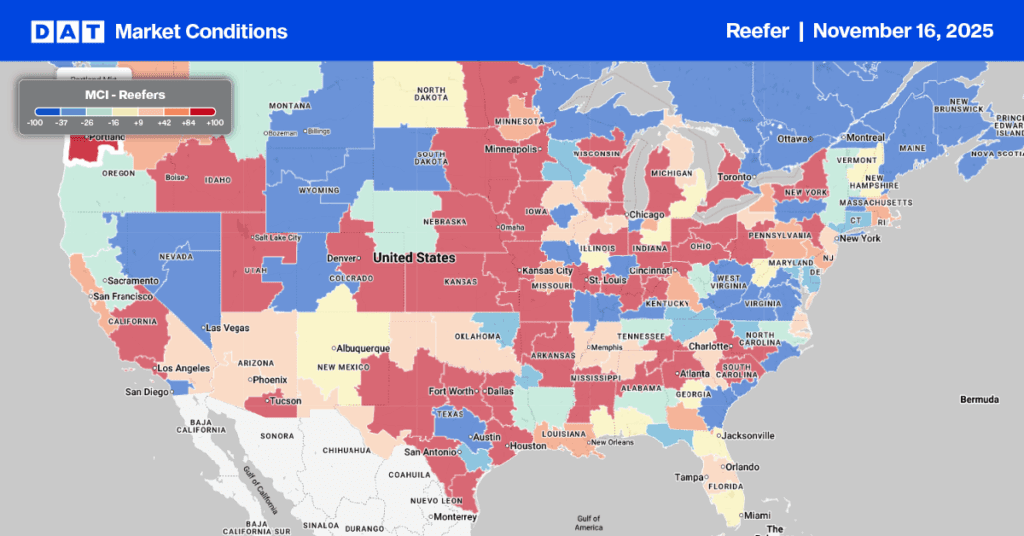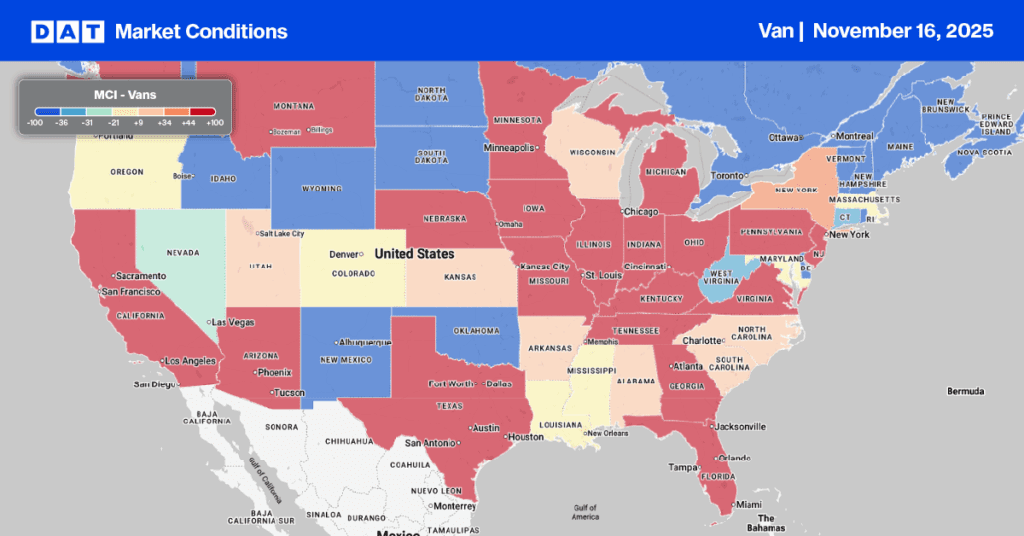Peak shipping typically occurs in the weeks leading up to Thanksgiving and continues through December. The U.S. Capitol Christmas Tree signifies the start of the shipping season, with this year’s tree making the 4,000-mile trek, which began on October 30 and will conclude on November 21 in Maryland.
Around the same time, the high-volume shipping season in the Pacific Northwest (PNW), where most trees are produced, begins with pine trees being shipped to manufacture holiday decorations, followed by trees bound for Hawaii loaded into containers in the first week of November. The week before Thanksgiving is the busiest time of year when most loads move to Texas, California, and other Western states.
According to the Pacific Northwest Christmas Tree Association (PNWCTA), Oregon and North Carolina account for just over half of the 25-30 million trees harvested nationwide. Oregon produces the most Christmas trees in the United States, accounting for about 30-40% of the nation’s Christmas tree supply. Around 92% of Oregon’s trees are exported from the region, mainly to California (45%) and Mexico (16%).
For carriers, the Christmas tree harvest coincides with the peak season for Fall produce in the PNW, including potatoes, onions, pears, and apples, to name a few, which results in tight capacity and rate increases out of critical markets, including Oregon and North Carolina.
Reefer, dry van, or flatbed?
For carriers and brokers, it’s a short shipping season characterized by remote loading locations involving helicopters, specialty trailers, and urban deliveries with multiple drops – not the easiest freight to haul. According to the PNWCTA, “The goal of every grower is to see that trees cut today are on the highway the same day en route to customers within hours of when they were harvested.” Shorter haul loads from Washington and Oregon to California can go in a dry van, but anything to the Midwest or East Coast requires a reefer to protect the trees from heat and freezing.
Some customers want ice blown over the top of the trees to keep them cold and prevent them from drying out, although some customers only want dry vans, even on such a long trip. They believe the air from the reefer unit dries the trees out, and the airflow chute limits the number of trees that will fit in the trailer.
For truckers, hauling Christmas trees is nothing to celebrate
DAT Freight & Analytics spoke to drivers hauling trees from the Canadian Pacific Maritimes. Trailers dropped at tree farms for pre-loading can be loaded in 24-36 hours, but unloading 800 trees can take two to three days. According to Bobby McDonald, an owner-operator with K&S Trucking in Sydney, Nova Scotia, “It all depends on how many people are there to help unload. Trees are mostly floor-loaded, so they must be loaded and unloaded by hand. It can take 3 to 4 hours to unload 400 trees, but here in New Jersey, it only took an hour to unload 428 trees this week. Throwing 11 workers at the load certainly made a difference.”
A lot of loads will involve multiple drops at small retail outlets, farm stands, and car parks, and that’s the time-consuming aspect of hauling Christmas trees. For regional haul loads from Oregon to California or Nova Scotia to New Jersey, it’s less about the rate per mile and more about the number of days a truck and trailer are under the load.
In many cases, that can easily be four days and up to six for multi-drop loads. Drivers also have to deal with sap and pine needles while returning on time for the holiday break.
Hurricane Helene impacts Christmas trees in the Carolinas
North Carolina is the second-largest producer of Christmas trees, particularly in the Blue Ridge Mountains. It produces many Fraser fir trees, known for their fragrance, soft needles, and muscular branches, making them a popular Christmas tree variety. According to the North Carolina Christmas Tree Association, Hurricane Helene’s impact will have a lasting impact on supply, though it may be more difficult to access farms this year.
Amber Scott, owner of Klein Church Nursery in Fleetwood, said, “After Helene, flood damage was fixed, but the farm’s biggest issue is inaccessible roads. “North Carolina is the number two producer of Christmas trees in the whole nation. And 96% of those Christmas trees come out of western North Carolina in primarily six counties that have all been impacted by this storm.”


